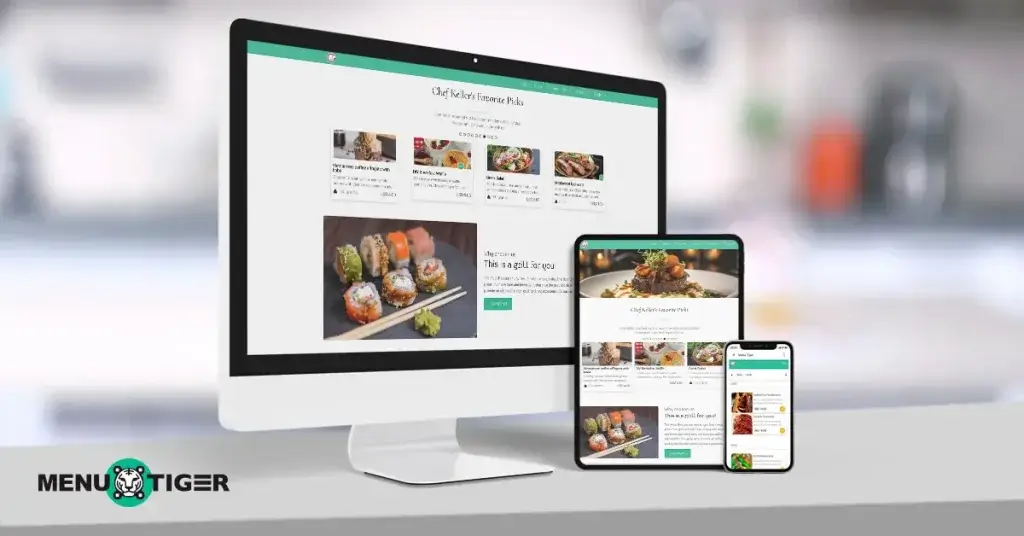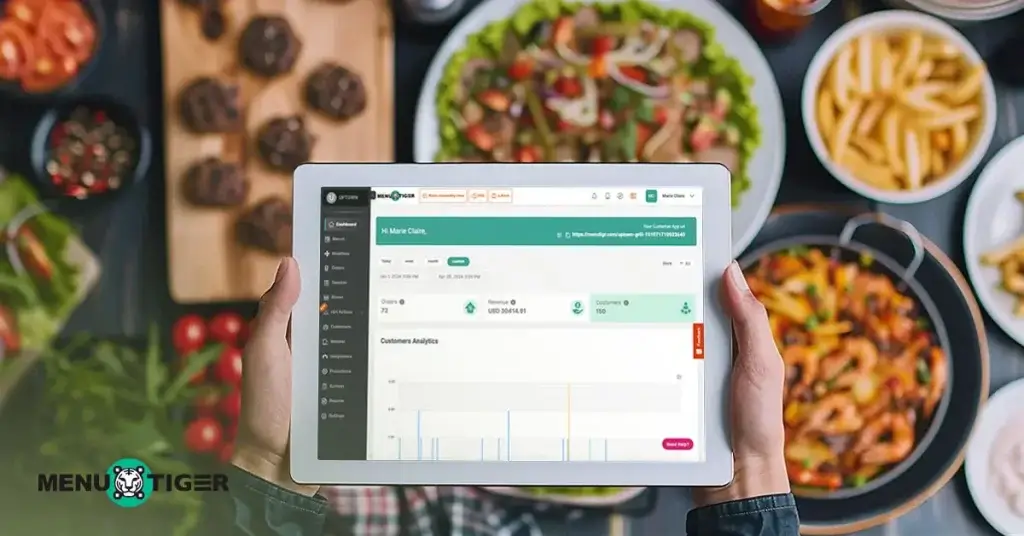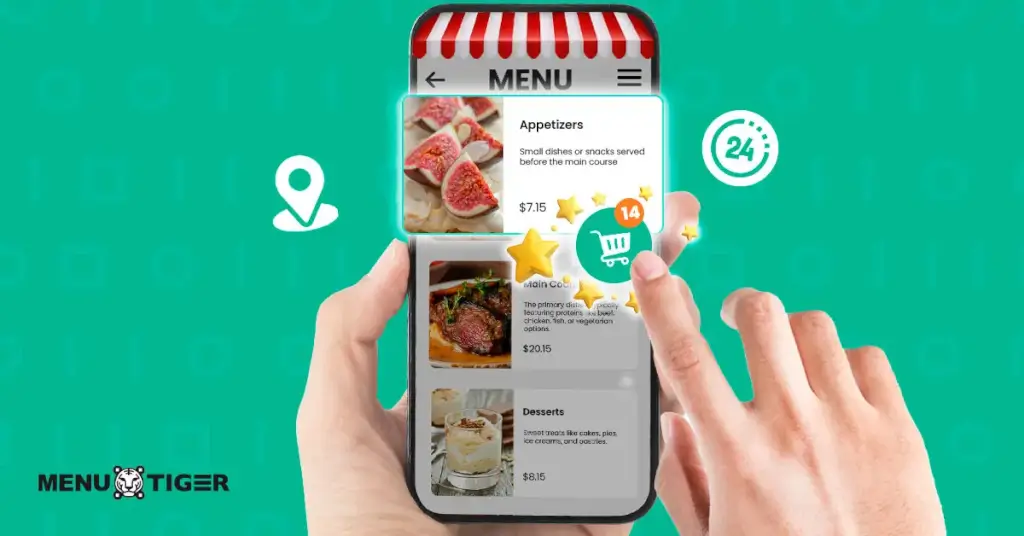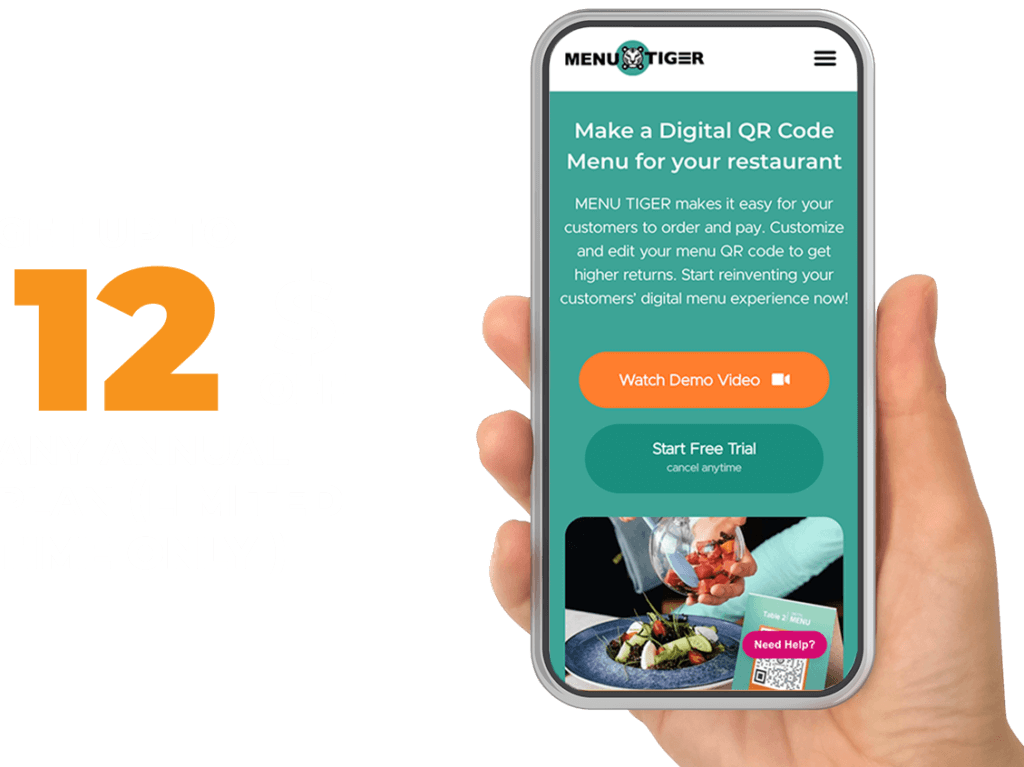Business growth does not stop once your restaurant is built and you hit your target sales. It’s also about staying agile and adapting to industry shifts — like reaching your customers through digital platforms.
However, it’s not as simple as posting food photos on social media and e-commerce sites. Learning how to sell food online successfully requires a strategic approach.
From identifying your niche and developing your products to setting competitive pricing and choosing the right restaurant ordering management tools, every aspect needs careful planning.
This comprehensive guide will provide you with effective strategies to launch and grow your first online food business.
Table of Contents
ToggleSelling food online: Why is it trending?
Digital food businesses have grown in popularity because of several factors:
A shift in consumer behavior
Statista’s global online food delivery report in 2024 signifies this popularity, as the market’s revenue is expected to reach $1.20 trillion and is expected to exhibit a compound annual growth rate (CAGR) of 9.04 percent, with a $1.85 trillion market volume by 2029.
This was brought about by the shifting consumer purchasing habits since the pandemic. According to McKinsey & Company, grocers watched 20 to 30 percent of their business shift online, given the surge in demand.
Convenience and expanded market reach
Interestingly, this has gradually continued as a Shopify Global E-commerce report found that roughly 42 percent of Americans stated they planned to spend more online over the next year, driven by the convenience of home delivery.
Additionally, Grand View Research says that the global meal kit delivery services market reached a record $20.54 billion in 2022 and is expected to grow at a CAGR of 15.3 percent until 2030, proving that customers are leaning more toward online food services than mere face-to-face dining.
Technology integration
The growth of a mobile menu app and better logistics has made it easier for businesses to deliver perishable items quickly and safely.
With the global delivery market size anticipated to reach $253.95 billion by 2030, an 18.7 percent CAGR forecasted to grow the industry even more.
10 strategic steps on how to sell food products online effectively
Getting into an online business is a game of strategies. You have to use the right tactics to secure a win in this saturated market.
Here’s a list of steps you can do to start your planning:
Choosing the niche
Selecting the right niche is a critical step when selling food online. But before jumping right into it, assess first the demand of your chosen niche to ensure its profitability.
In your case, conduct market research to evaluate trends and consumer behaviors.
So, if your on-site restaurant is known for using all organic ingredients, you can focus on providing healthy alternatives to popular snacks or food trends that are going viral.
You can also offer high-end, ready-to-eat meals for professionals who lack the time to cook for themselves.
Studying local food regulations
Once you’ve decided on your niche, research and study local food safety regulations.
This includes adhering to proper labeling, hygiene standards, and food handling practices.
Obtain necessary permits like a food handler’s certifications and other licenses your locality requires to legally operate online and ensure that your products meet the safety standards for consumers.
Source ingredients
If you’re going to produce new menu items (other than your regular menu), look for partners with whom you can source ingredients in advance.
Partner with reliable suppliers to guarantee high-quality, safe ingredients for your food products.
Prioritize sourcing locally or sustainably if it aligns with your brand and niche. This can enhance your product’s appeal and set you apart from your competitors.
Setting up your online store

To ensure success in selling food, you need a food-selling website on which to set up your online store.
The website’s layout should make it easy for users to browse, find what they’re looking for, and complete their purchases without hassle.
Take a look at the Federalist Pig — one of Washington, DC’s most iconic barbecue joints. It is a feast for the senses, featuring bright colors, cheeky line illustrations, and mouthwatering food photography and videography.
Despite the loud, eye-catching design, the site itself offers clean, well-structured navigation.
So, here are some key features you can include:
- Product pages
Each of your menu items should have a dedicated page. Use high-quality images, detailed descriptions, pricing, and other helpful information for your customers.
Include a section for the survey for food and service to gather feedback.
- Easy navigation
To make browsing simpler, organize products into categories—snacks, meal kits, and beverages.
A search bar over the header is also a useful tool for customers looking for specific products.
- Mobile optimization
A large portion of consumers is using their smartphones when ordering.
In fact, 79 percent of smartphone users have made a purchase online using their mobile devices in six months.
For you to take advantage of these findings, ensure your website is mobile-friendly and responsive.
Do a pilot testing first using your mobile devices before setting it out to the public.
Using Affiliate Software
Leveraging affiliate software can significantly boost your online food product sales by tapping into a network of influencers and marketers who promote your products for a commission.
Choose a reliable affiliate platform, such as ShareASale or UpPromote, to manage your program efficiently.
Set up attractive commission structures to incentivize affiliates, ensuring they align with your brand’s values and target audience, such as food bloggers or health-focused content creators.
Provide affiliates with high-quality promotional materials, like banners, product images, and sample content, to make it easy for them to showcase your food products.
Regularly track performance through the software’s analytics to optimize campaigns, reward top performers, and refine your strategy, ultimately driving more traffic and conversions to your online store.
Delivery

Have an option for delivery.
This is an essential component in the online food business, as it directly impacts customer satisfaction and brand reputation.
Additionally, a report on food delivery statistics indicates that 65 percent of restaurant operators see offering food delivery generates great sales.
Finding reliable delivery partners comes with it, but it is much better if your restaurant offers in-house delivery services so that you’ll have full control of the quality assurance policies.
If your online food business manages its own deliveries or plans to expand into local order fulfillment, efficient routes and timely arrivals are crucial for customer satisfaction.
In this competitive environment, many businesses optimize their operations by using courier software—advanced tools designed to streamline delivery scheduling, tracking, and route optimization.
Exploring time-saving delivery optimization software platforms can help improve delivery efficiency and even evaluate pricing options to ensure profitability as your orders grow.
Remember that food packaging plays a huge part in keeping your food fresh and avoiding spoilage when you deliver it. So, research different types of food packages for every dish you’re offering.

Pricing and profit margins to sell food products online
Set the right prices for your food products.
Price too high, and you risk loosing potential customers; price too low, and you may cut into your profit margins.
So, to balance them out, understand your costs. This might slightly differ from your brick-and-mortar, considering the additional expenses you have to incur, but it is best not to leave a single component when listing them out.
Include the following:
- Cost of ingredients
- Packaging costs
- Production costs
- Delivery
- Overhead costs
- Marketing and sales costs
Once you’ve determined your total costs, you need to set a price that covers them and leaves room for profit.
You can explore using the cost-plus restaurant menu pricing method, as this is one of the common strategies.
Remember to leave a sufficient profit margin to cover the cost and reinvest in your business.
Here’s how :
Gross Profit Margin = (Revenue – Cost of Goods Sold)/ Revenue x 100
For example, if you sell a dish for $10 and it costs you $6 to produce, your expected profit is $4. Then the profit would be:
Gross Profit Margin = ($10 – $6) ÷ $10 x 100 = 40%
A good profit margin for food businesses ranges from 30 percent to 50 percent but still varies on factors like niche and volume.
Setting up payment and logistics
Provide various payment options.
You can go for PayPal and credit cards to make purchasing convenient.
You can also streamline operations using a restaurant order system to track orders and inventory.
This ensures efficient processing and timely deliveries while reducing manual tasks, considering if you’re also operating simultaneously with your physical store.
Marketing your online food business

Build strong marketing strategies to gain traction.
With the crowded digital marketplace, particularly with 320 million social media users as of January 2024, it’s paramount to use strategic tactics to make your brand noticeable, attract the right audience, and build a loyal customer base.
Leverage the use of social media networks for your food advertisements to create engaging content that builds brand awareness directly with your audience.
In fact, Business.com reported that 86 percent of marketers said that their social media marketing efforts gave more exposure to their business.
These figures only attest to the effectiveness of this modern way of marketing new sources for growing business performance.
Keep track of social media food trends so you can align your offerings with what’s going viral on these sites.
Managing customer feedback and reviews
Excellent customer service can keep customers coming back for more, so make sure to build one.
It starts with effectively handling inquiries and feedback. How you respond to customer inquiries can shape your brand’s reputation and affect customer satisfaction.
So, aim to respond to all of the inquiries within 24 hours. Whether through email, social media, or live chat, prompt responses shows that you care about addressing customer concerns.
Answer their questions thoroughly and transparently. If the issue is more complex, offer solutions, alternatives, or compensations when appropriate.
HubSpot industry report indicated that improving the customer experience through high-quality service can increase sales revenue by 2 to 7 percent and profitability by 1 to 2 percent — considered as an above-average result for a business.
Scale and optimize
As your online food business expands, seek to streamline operations.
Leverage smart menu restaurant technology to take the load off your shoulders to focus on your strengths and enhance efficiency.
This approach allows you to allocate resources more effectively and maintain product quality.
Additionally, consider diversifying product lines to attract a broader customer base and explore retail opportunities to increase distribution channels.
Build your profitable online food store with smart QR code menu software

To keep things in order and make sure quality is at best both in your physical establishment and, eventually, your online store, it should be a priority for you to provide the best customer service in town.
So, you need an assistant to take some of the hats in your head.
A smart QR code menu technology like MENU TIGER is best suited for the job. It is not only an advanced digital menu provider but also offers even more to help you streamline your workflow.
Here’s a sneak peek:
A customizable, mobile-friendly website builder
Develop and design your restaurant’s website to increase its overall visibility.
You can integrate your social media platforms, promotional materials, and your menu effortlessly. You can also make your website’s ordering process user-friendly to draw new guests.
Multilingual feature
Break down communication barriers with this language menu translation integration that caters to foreign customers, making your menu more accessible to a wide customer base/
Collect orders and payment hassle-free
With menu QR codes, your menu becomes accessible anywhere, at any time. You can include these through your social media content and other promotional materials.
In addition, customers are used to having instantaneous access, so having them pay conveniently and efficiently should be one of your priorities.
With MENU TIGER’s variety of online payment alternatives in its like PayPal and Stripe, this is made possible.

Go beyond your brick-and-mortar with MENU TIGER
Expanding your business from the conventional setting to the digital arena requires careful planning to ensure that your resources are not wasted.
You’re not just putting what you offer out there but making a strategic move to secure a spot in e-commerce.
That’s why you need to learn how to sell food online effectively.
To assist you in your business expansion, partnering with MENU TIGER QR code menu software offers a huge vantage point for you: from accessible digital menus to effective modern marketing efforts, so you’ll get to focus on developing quality dishes.
With a good dish and excellent service, you’ll be putting your name on the map in no time.
So, kick-start your planning now by visiting the website, creating an account, and building your online food empire.
FAQs
The best food to sell online typically includes nonperishable or shelf-stable items like snacks, specialty sauces, spices, or meal kits, as these can be easily shipped and stored.
Gourmet products, like artisanal chocolates, coffees, or unique regional treats, also do well since they cater to niche markets and gift buyers.
To advertise food online effectively, follow these strategies:
Use eye-catching visuals
Leverage social media
Collaborate with influencers
Run targeted ads
Offer deals and promotions
Encourage user-generated content (UGC)
Optimize website for search engine optimization
Do email marketing





